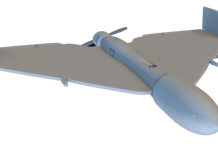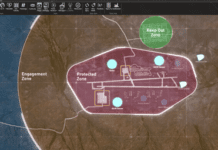This post is also available in:
 עברית (Hebrew)
עברית (Hebrew)
Today more than ever military forces and opposition groups are using night vision sensors and thermal devices. Detection by thermal imaging is an emerging threat to US military forces, and the Army is looking for solutions.
Military camouflage technology has taken large strides in the last decade or so, with lots of novel camouflage concepts being developed including BAE Systems’ Adaptiv vehicle cloaking technology, Hyperstealth Biotechnology’s light-bending Quantum Stealth material technology, and more.
With the help of US camouflage manufacturer Fibrotex, the US Army is eyeing two new technological breakthroughs to avoid thermal imaging.
One of the technologies designed to protect US soldiers from the threat of infrared detection is the Ultra-light Camouflage Netting System (ULCANS) created by Fibrotex. According to the company, the ULCANS multi-spectrum camouflage provides greater protection from infrared and thermal radars, and comes in a reversible design suitable for woodland, snow and desert environments, blending into the terrain whatever the weather conditions.
Another concept, albeit still in its early stages, is the US Army’s Improved Ghillie System (IGS), touted to replace the existing Flame Resistant Ghillie System, designed specifically for the 3,300 snipers across the US Armed Forces. The idea is to create a much simpler and modular IGS with equipment that snipers want to use. The IGS project is still in the testing phase and so far lots of variations have been designed by different defence firms.
Meanwhile, Russian state company Rostec has been developing a new full-body exoskeleton with advanced military camouflage technology for the Russian Army. As well as providing torso ‘invisibility’, another one of the key features of the Ratnik-3 exoskeleton design is an eyeglass that provides critical reconnaissance information with thermal imaging capabilities, exactly what the US Army is looking to avert.
The Ratnik-3 exoskeleton concept, developed in collaboration with Rostec and the University of Science and Technology in Moscow, employs both a thermal imaging infrared camera built into the helmet that can detect enemy body temperatures, and a protective camouflage technology in the torso that hides the wearer’s thermal signature, according to army-technology.com.


























